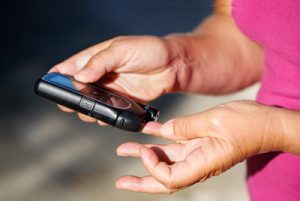Minnesota is home to more than 85,000 thousand immigrants from East Africa and most of them came to Minnesota from 1991 to present day. Some of them have languages barrier and developed uncertainty diseases, such as diabetes, high blood pressure, cardiovascular disease, alcohol and drugs abuse, mental health issues, overweight, obesity, and sickle cell anemia disease. Not only health related problems that immigrants are experiencing, but also social and economic burdens. Because of these problems, GmTc strived to provide basic services including health screening testing, health education, language translation, and financial related advising for participants. Further upon heath screening; if found necessary, GmTc would serve as a referral agency to hospital or clinics. GmTc also will provide health education about how to control weight, eat healthy diet/nutrition, and help with transportation to clinics or hospital for appointment.

Our program basic health screening includes:
- Blood Glucose check

- Vital Sign check
- Body Mass Index
- Pregnancy Test
- Cholesterol
- STI test
- Flu shot and so forth
Hyperglycemia (High Blood Glucose)
According to American Diabetes Association; Hyperglycemia is the technical term for high blood glucose (blood sugar). High blood glucose happens when the body has too little insulin or when the body can’t use insulin properly. A number of things can cause hyperglycemia, most common types: Type 1 diabetes and Type 2 diabetes, “Diabetes” also called diabetes mellitus
Factors:
Risk factors for diabetes depend on the type of diabetes.
Type 1 diabetes, once known as juvenile diabetes.
It is a chronic condition in which the pancreas produces little or no insulin in the body.
Exact cause of type 1 diabetes is unknown but factors that may increase risk are:
Family history
Environmental factors
The presence of damaging immune system cells (autoantibodies)
Dietary factors
Type 2 diabetes
It is a chronic condition that affects the way the body processes blood sugar (glucose).
Overweight: The more fatty tissue you have, the more resistant your cells become to insulin.
Inactivity: The less active you are, the greater your risk. Physical activity helps you control your weight, uses up glucose as energy and makes your cells more sensitive to insulin.
High blood pressure: Having blood pressure (B/P) over 140/90 is linked to an increased risk of type 2 diabetes
Family history: Risk increases if a parent or sibling has type 2 diabetes
Race: Being blacks, Hispanics, American Indians and Asian-Americans — are at higher risk.
Age: Risk increases as we get older
Pre-diabetes
A condition in which blood sugar is high, but not high enough to be type 2 diabetes
Gestational diabetes
It is a form of high blood sugar affecting pregnant woman. When woman developed gestational diabetes during pregnancy; risk of developing pre-diabetes and type 2 diabetes later increases.
Giving birth to a baby weighing more than 9 pounds (4 kilograms), also increase risk of type 2 diabetes.
Diabetes symptoms vary depending on how much blood sugar is elevated. Some people, especially those with pre-diabetes or type 2 diabetes, may not experience symptoms initially. In type 1 diabetes, symptoms tend to come on quickly and be more severe.
Some of the signs and symptoms of type 1 and type 2 diabetes are:
- Increased thirst
- Frequent urination
- Extreme hunger
- Unexplained weight loss
- Presence of ketones in the urine
- Fatigue
- Irritability
- Blurred vision
- Slow-healing sores
- Frequent infections
Low blood sugar (hypoglycemia)
If blood sugar level drops below normal range, there must be many reasons, including skipping a meal and getting more physical activity than normal.
Look out for signs and symptoms of low blood sugar including:
- sweating,
- shakiness,
- weakness,
- hunger,
- dizziness,
- headache,
- blurred vision,
- heart palpitations,
- irritability,
- slurred speech,
- drowsiness,
- confusion,
- Fainting and seizures.
Low blood sugar is treated with quickly absorbed carbohydrates, such as fruit juice or glucose tablets.
Blood Sugar Chart
Category
Fasting Value (mg/dl)
Post Prandial (mg/dl)
Minimum Value
Maximum
Value 2 hours after consuming glucose
Normal
70
100
Less than 140
Early Diabetes
101
126
140 to 200
Established Diabetes
More than 126
–
More than 200
